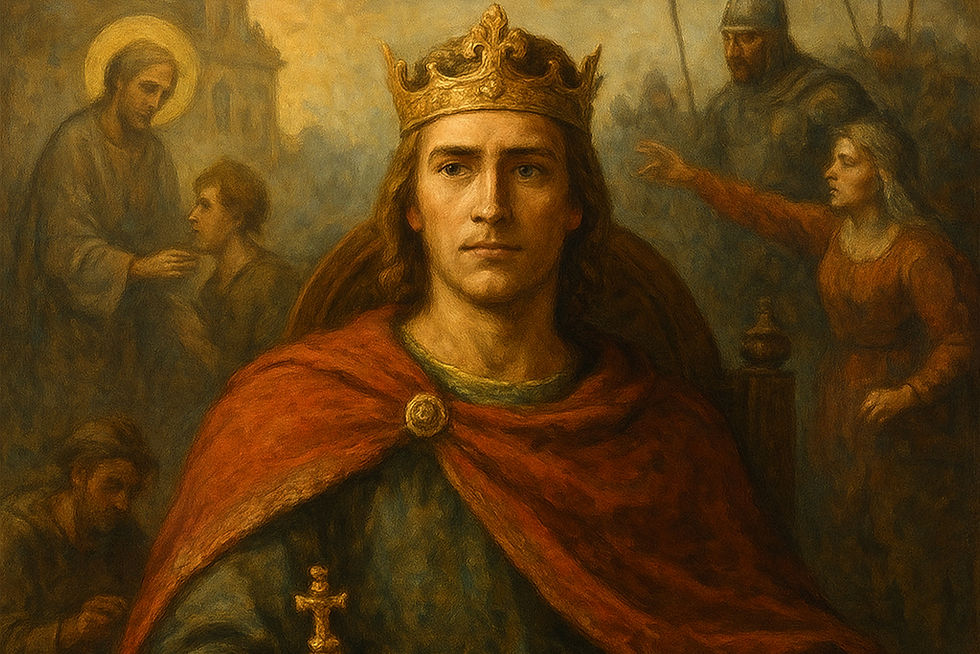A Sparkling Start: The Invention of Coca-Cola on May 8, 1886
- History Tidbits
- May 8
- 3 min read
Updated: May 13

On May 8, 1886, a curious new drink was served for the first time at Jacobs' Pharmacy in Atlanta, Georgia—Coca-Cola. What began as a modest medicinal tonic has grown into one of the world’s most iconic and recognizable brands. With its distinctive flavour, secret formula, and unmistakable red and white branding, Coca-Cola has become much more than a beverage; it's a symbol of Americana and global culture alike.
Coca-Cola’s inventor, Dr. John Stith Pemberton, was a pharmacist and former Confederate officer who sought to develop a pain-relieving tonic after sustaining injuries during the Civil War. A seasoned chemist, Pemberton had already experimented with various medicinal concoctions, but in 1886, he combined coca leaf extract and kola nut (a source of caffeine), along with sugar, caramel coloring, and other flavorings, to create what he originally called "Pemberton’s French Wine Coca." Due to Atlanta’s temperance laws banning alcohol, he modified the formula into a non-alcoholic syrup, which he then took to Jacobs’ Pharmacy.
That first glass of Coca-Cola was sold for five cents and marketed as a remedy for headaches, fatigue, and nervous disorders. The drink was served cold from a soda fountain, a popular feature of drugstores at the time. Pemberton’s bookkeeper, Frank M. Robinson, not only suggested the name “Coca-Cola” but also designed the flowing script logo that is still used today. Robinson believed the two "C"s would look well in advertising—a prediction that turned out to be astoundingly accurate.
Despite the uniqueness of the formula, Pemberton's creation didn't take off immediately. He struggled to find a market for it and sold portions of his business to various partners as his health declined. Just before his death in 1888, Pemberton sold the remaining interest in Coca-Cola to Asa Griggs Candler, an Atlanta businessman who recognized the beverage’s commercial potential. Candler soon bought out the other shareholders and formed The Coca-Cola Company.
Under Candler’s leadership, Coca-Cola transformed from a local curiosity into a national phenomenon. He invested heavily in advertising, giving away coupons for free samples and plastering the brand name on everything from clocks to calendars. By the turn of the century, Coca-Cola was being consumed across the United States. Bottling began in 1894, making the drink more widely available and more portable, contributing to its rapid spread.
Over the decades, Coca-Cola continued to grow, adapting with the times while holding fast to its iconic formula—kept secret in a vault in Atlanta. The drink played a role in American life during both World Wars, and during World War II, Coca-Cola’s commitment to ensuring U.S. soldiers had access to the beverage overseas helped embed it into global consciousness. After the war, Coca-Cola was no longer just an American brand—it was international.
Today, Coca-Cola is sold in over 200 countries, with more than 1.9 billion servings consumed daily. It has spawned countless spin-offs and variants—Diet Coke, Coca-Cola Zero Sugar, Cherry Coke—but the original formula remains the foundation of the brand’s legacy. The company has weathered controversies, competition, and cultural shifts, yet it continues to thrive as a dominant force in the global beverage industry.
The story of Coca-Cola is more than just the tale of a soft drink. It’s a narrative of innovation, branding genius, and cultural influence. From one humble glass served on May 8, 1886, Coca-Cola has become a symbol of refreshment, nostalgia, and corporate success. As we raise our bottles today, we toast not just a beverage, but a piece of history that started with a pharmacist’s experiment on a spring day in Atlanta.



Comments